- News
- Reviews
- Bikes
- Components
- Bar tape & grips
- Bottom brackets
- Brake & gear cables
- Brake & STI levers
- Brake pads & spares
- Brakes
- Cassettes & freewheels
- Chains
- Chainsets & chainrings
- Derailleurs - front
- Derailleurs - rear
- Forks
- Gear levers & shifters
- Groupsets
- Handlebars & extensions
- Headsets
- Hubs
- Inner tubes
- Pedals
- Quick releases & skewers
- Saddles
- Seatposts
- Stems
- Wheels
- Tyres
- Tubeless valves
- Accessories
- Accessories - misc
- Computer mounts
- Bags
- Bar ends
- Bike bags & cases
- Bottle cages
- Bottles
- Cameras
- Car racks
- Child seats
- Computers
- Glasses
- GPS units
- Helmets
- Lights - front
- Lights - rear
- Lights - sets
- Locks
- Mirrors
- Mudguards
- Racks
- Pumps & CO2 inflators
- Puncture kits
- Reflectives
- Smart watches
- Stands and racks
- Trailers
- Clothing
- Health, fitness and nutrition
- Tools and workshop
- Miscellaneous
- Buyers Guides
- Features
- Forum
- Recommends
- Podcast
TECH NEWS
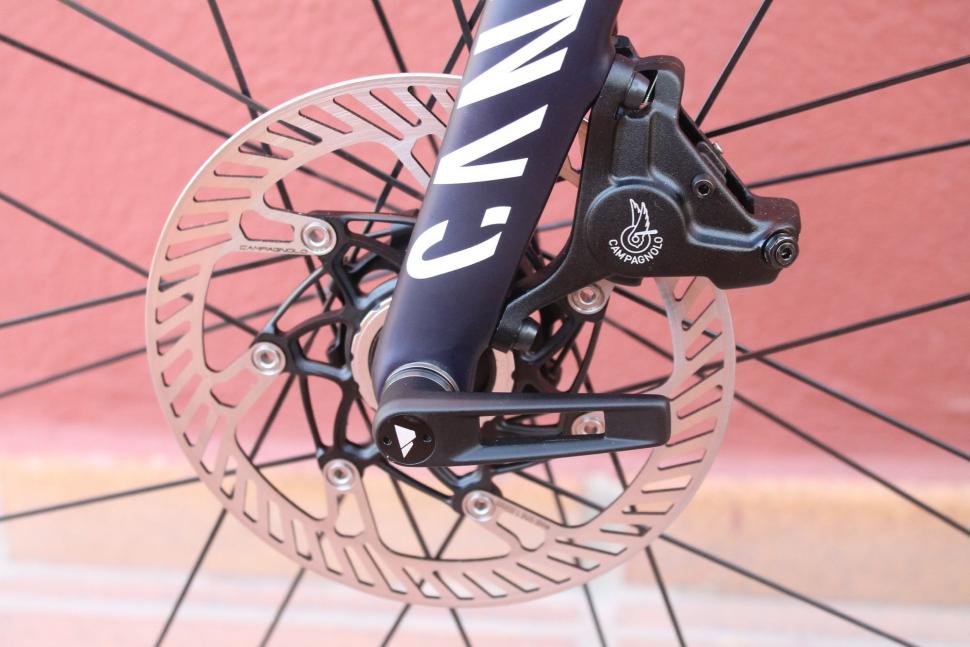 Campagnolo new components 2017 - 5.jpg
Campagnolo new components 2017 - 5.jpgFirst Ride: Campagnolo FINALLY announces disc brake lineup
Campagnolo has at last revealed details of its hydraulic disc brake project which will cover its Super Record, Record, Chorus and Potenza groupsets, including the Super Record EPS and Record EPS electronic variants.
“You might ask why we are presenting disc brakes this year when we all know what happened last year: the pro teams were allowed to test disc brakes but then after Ventoso’s accident [in the 2016 Paris-Roubaix, blamed on a disc brake rotor, although that is disputed] everything was stopped,” said Lorenzo Taxis, Campagnolo's marketing and communication director.
“This season started with the same concept: the teams are allowed to test but let’s see what happens. We thought we couldn’t wait any longer, so we decided to finalise the project. We are the last company in the peloton to launch disc brakes, so we need to be the best.”
We had the chance to use the new products when Campagnolo flew us out to the launch in Gran Canaria a couple of weeks ago. We’ve had to keep shtum about them until now; that’s part of the deal.
Before going into detail, here are the essentials:
• Campagnolo’s new high-end disc brake systems are called H11 and they’re available in both mechanical shifting (for Super Record, Record and Chorus) and EPS (for Super Record and Record) versions.
• Discs are not (at this stage, at least) being added to the Chorus EPS groupset.
• Campagnolo’s mid-level Potenza groupset gets its own hydraulic disc brakes, the design being similar to that of the H11 brakes but using a different material.
• Campagnolo initially partnered with Magura on the hydraulic cylinder but took the design and modified it. Everything except the hydraulic cylinder has been 100% designed by Campagnolo, and it is all made in Campag’s own facilities in the EU.
• The master cylinder is positioned at the front of the Ergopower control. This makes the front end 8mm taller than the rim brake equivalent.
• The front brake will use a 160mm rotor while you’ll have the choice of either 160mm or 140mm at the rear, Campagnolo suggesting 160mm for riders weighing over 80kg.
Ergopower controls
The master cylinder, which is identical across the range of Campagnolo disc brakes, is positioned vertically at the front of the Ergopower control so the front end is higher than that of the equivalent rim brake version, but only by 8mm. The bleed port is positioned at the top for ease of operation and the system uses low viscosity mineral oil.
Although the ergonomics are almost identical to those of the rim brake Ergopowers when you’re resting your hands on the hoods or using the controls from the drops, this slight increase in height does give you a much more secure hand position when you grab the top of the controls and ride with your forearms parallel to the ground.
The disc brake Ergopower levers certainly look a bit more nose-heavy than rim-brake Ergopowers and there will doubtless be people who object to them on that basis. Campag, of course, reckons that this is “perhaps the most elegant disc brake command solution available.” The shape reminds me more of SRAM’s hydraulic levers than Shimano’s, although the front-end rise is less extreme.
The brake levers still have a double curve but they have been slightly modified to include an outward curve towards the bottom that’s intended to make it easier to brake when you’re using the drops of modern handlebars.
The H11 Ergopower controls for Super Record, Record and Chorus groupsets have carbon-fibre brake levers while the Potenza Ergopower controls have aluminium brake levers.
You can adjust the amount of free stroke you get at the lever before the brake engages using what Campagnolo calls its Adjustable Modulation System (AMS). You have the choice of two different positions – long and short – and swapping between them is a simple job with a 2.5mm hex key.
You can also micro-adjust the reach to the brake lever and independently adjust the reach to lever 3, the shift lever that sits behind the brake lever.
Disc brake callipers
The forged aluminium disc brake callipers are flat mount standard, compatible with all flat mount frames and forks out there without the need for an adaptor which could compromise the rigidity and integrity of the system. The two screws need to mount the brake calliper are available in several different lengths.
The brakes feature 22mm pistons made from phenolic resin, chosen for its thermal insulation qualities. The idea, of course, is to minimise the amount of heat that gets transferred from the pads to the rest of the system.
Rather than using a mechanical spring, the brakes have a magnetic spring on the pistons. Campagnolo says that this won’t wear out like a mechanical spring and it guarantees a faster return.
Campagnolo uses an organic resin pad compound that it says is extremely resistant to heat and provides uniform and consistent braking performance whatever the climate and however much braking you do.
The pad, which sits in a frame that’s made of steel for strength, has a visible indicator to show you when it has worn out. It is designed to make a louder noise during braking when it’s time for a replacement too.
Rotors
The front brake will use a 160mm rotor while you have the choice of either 160mm or 140mm at the rear, Campagnolo suggesting 160mm for riders over 80kg.
Campagnolo’s steel rotors are, of course, designed to dissipate heat to maximise safety without adding too much weight, hence multiple slots in the braking surface.
In the light of safety concerns from the pro peloton, the edges of the rotors have been rounded off, adding an extra element to the production process. Those edges are about as smooth and unblade-like as you can imagine!
Chainset
A disc brake-specific chainset? Yup. This requires an explanation.
“As the geometries and spacing found on disc brake frames differ a good deal with respect to their traditional rim brake predecessors, the design of the transmission and chainline must take these differences into account to ensure optimum performance,” says Campagnolo.
“Campagnolo engineers have developed the H11 chainset to match perfectly with Super Record, Record and Chorus transmissions, as well as a new Potenza 11 chainset, to ensure shifting is as crisp, clean and precise as any other groupset with rim brakes. This new chainset design, in both H11 and Potenza 11 versions, ensures excellent precision for 142mm rear spacing and does so without altering the Q factor [145.5mm].”
So there you go, that’s the reasoning. Campagnolo says even the chainrings are specific to the disc brake system.
Pricing and availability
Here’s what Campagnolo’s new disc brake components will cost. We only have prices in Euros for the individual components.
Potenza mechanical shifting/hydro disc brakes
Potenza chainset €254.97
2 Potenza Ergopower + calliper and screws €781.92
2 rotors €100
Bleed kit €33.25
Total €1,170.14
H11 mechanical shifting/hydro disc brakes
H11 chainset €649.94
2 H11 Ergopower + calliper and screws €986.90
2 rotors €100
Bleed kit €33.25
Total €1,770.09
H11 EPS shifting/hydro disc brakes
H11 chainset €649.94
2 H11 Ergopower + calliper and screws €1,105.68
2 rotors €100
Bleed kit €33.25
Total €1,888.87
We do have UK prices for complete groupsets with hydraulic disc brakes:
Potenza mechanical £1,339.43
Chorus mechanical £1,985.81
Record mechanical £2,231.11
Record EPS £3,443.26
Super Record mechanical £2,439.68
Super Record EPS £3,725.95
The new disc brakes should be available from the end of this month.
In use
I got the chance to use the H11 brakes on a bike with a Super Record mechanical groupset. The ride was about 2:30hrs long with 1,300m of climbing and descending – some hairpins, some meandering roads, and some long, straight downhills.
The first thing you notice is that, as Campagnolo promises, the ergonomics of the Ergopowers are very similar to those of the rim brake controls. They feel just as comfortable when you’re riding on the Vari-Cushion hoods and the levers are equally accessible.
There are a couple of differences. First, the brake lever kinks out just a little bit more at the bottom, the idea being that it works better when you’re on the drops. To be honest, the difference is so subtle that I don’t think I’d have even noticed if I hadn’t been told about it.
The other difference is that the height of the Ergopower has been increased at the front by 8mm in order to accommodate the hydraulic brake’s master cylinder. This is something that you will notice if you’re familiar with Campag’s rim brake Ergopowers.
Visually, I don’t think the disc brake Ergopower is quite as attractive as a rim brake version, but it doesn’t particularly offend me either. You’ll doubtless have your own feelings on that.
What’s not really a matter of dispute is that this higher front end gives you a far more secure position when you lean forward, put your hands on the tops of the Ergopowers and ride with your forearms parallel to the ground. I like riding in this position and the small increase in height makes a big difference when you want to get low and aggressive.
What about when you actually apply the brakes? Campagnolo claims that its disc brake groupset decelerates faster than its competitors for the same amount of pressure at the lever – anywhere from 23% to 26% faster in the wet, depending on the competitor, and anywhere from 4% to 55% faster in dry conditions.
We rode in completely dry conditions so I can’t comment on wet weather performance. The experience in the dry, though, was excellent. These brakes really bite, offering an impressive amount of progressive power without the need to apply too much pressure at the lever.
Are they 4-55% better than the opposition? Pfff! On an unfamiliar bike and unfamiliar terrain, I’m not able to verify that claim. What I can say is that haring down a 30 minute descent, I didn’t have to give a second thought to the braking, and that’s always a good sign. Need to feather off a little speed for a slight right-hander? The slightest of squeezes will achieve it. Find yourself overcooking it into a tight hairpin? There’s masses of power to bring yourself back on track. The Campag brakes performed faultlessly and virtually noiselessly throughout.
The Adjustable Modulation System (AMS) works well. This allows you to adjust the amount of movement at the lever before the brake starts to bite. You can choose between long and short positions, switching between them with a 2.5mm hex key. The difference is significant, the choice between them coming down to a matter of taste. I’m sure you’d get used to either setting pretty quickly.
You can also dial the brake levers in closer to the handlebar if you have small hands, as you can with Campagnolo rim brakes (and those from many other manufacturers), and independently alter the distance to lever 3, the shifter paddle that sits behind the brake lever.
Campagnolo says that the system “is fully capable of withstanding heat and maintaining performance in situations that cause failure in certain models of the competition.”
We descended for maybe 45 minutes, but only about half of that required a lot of braking, the remainder being shallow and straight. That’s not long enough to find out whether the brakes are likely to cook on a long Alpine descent in the middle of July.
All in all, early impressions are positive. Campagnolo has rocked up to the party late but it has arrived with some prosecco tucked under its arm. The Ergopower controls are great and the braking performance feels to me to be at least on a par with the other big players out there. Long term use will reveal more but it looks like Campag has spent its time well getting everything up to a high standard before release.
Mat has been in cycling media since 1996, on titles including BikeRadar, Total Bike, Total Mountain Bike, What Mountain Bike and Mountain Biking UK, and he has been editor of 220 Triathlon and Cycling Plus. Mat has been road.cc technical editor for over a decade, testing bikes, fettling the latest kit, and trying out the most up-to-the-minute clothing. He has won his category in Ironman UK 70.3 and finished on the podium in both marathons he has run. Mat is a Cambridge graduate who did a post-grad in magazine journalism, and he is a winner of the Cycling Media Award for Specialist Online Writer. Now over 50, he's riding road and gravel bikes most days for fun and fitness rather than training for competitions.
Latest Comments
- ROOTminus1 2 sec ago
I'm glad the article went into more detail and cleared things up, the headline had me worried that some autonomous building had run rampant and...
- mark1a 18 min 33 sec ago
Still here, just showing a few signs of wear and tear. Hopefully still serviceable for some years to come.
- Secret_squirrel 48 min 25 sec ago
Has he fully recovered though, and will he ever?...
- Rendel Harris 1 hour 3 min ago
How can you know that you are "equally fearful" as "any female cyclist"? There is no possible way of quantifying such emotions and female cyclists...
- chrisonabike 1 hour 35 min ago
I think it would be fairer to blame the moon - as in "my client is a loony".
- Bungle_52 1 hour 58 min ago
Nice idea but Gloucestershire Constabulary are not interested as exemplified by this prvious NMOTD. Not only was there NFA for the close pass in...
- hawkinspeter 3 hours 30 min ago
I think black boxes are great for early detection of cognitive decline and/or sight problems. Someone's driving is going to become much less smooth...
- Bigtwin 4 hours 6 min ago
It's a fashion. https://guildford-dragon.com/shalford-driver-who-smashed-shalford-war-me...
- MTL Biker 4 hours 26 min ago
Robin Phans .....
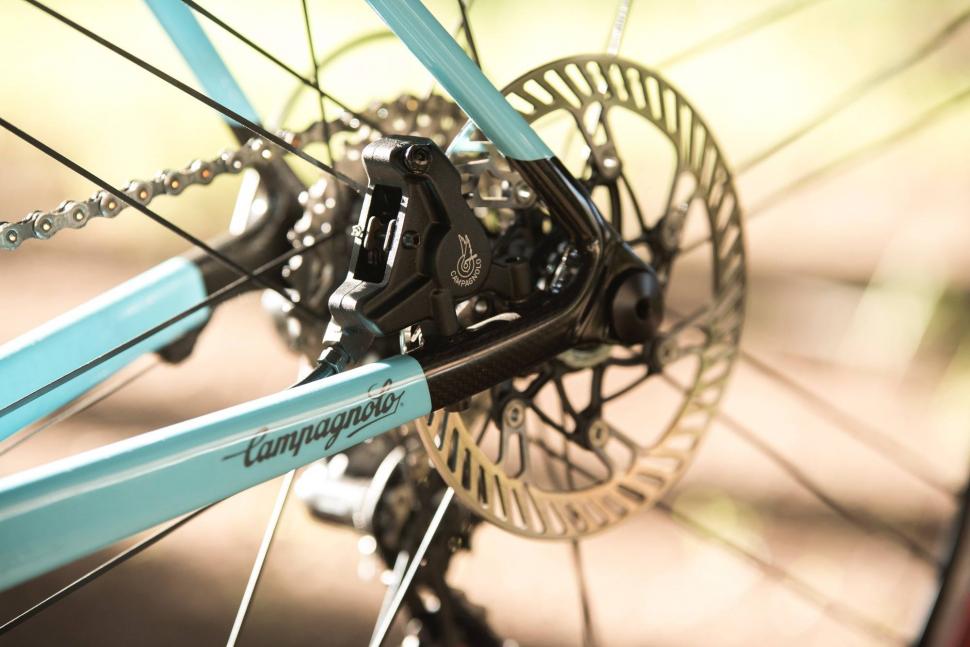


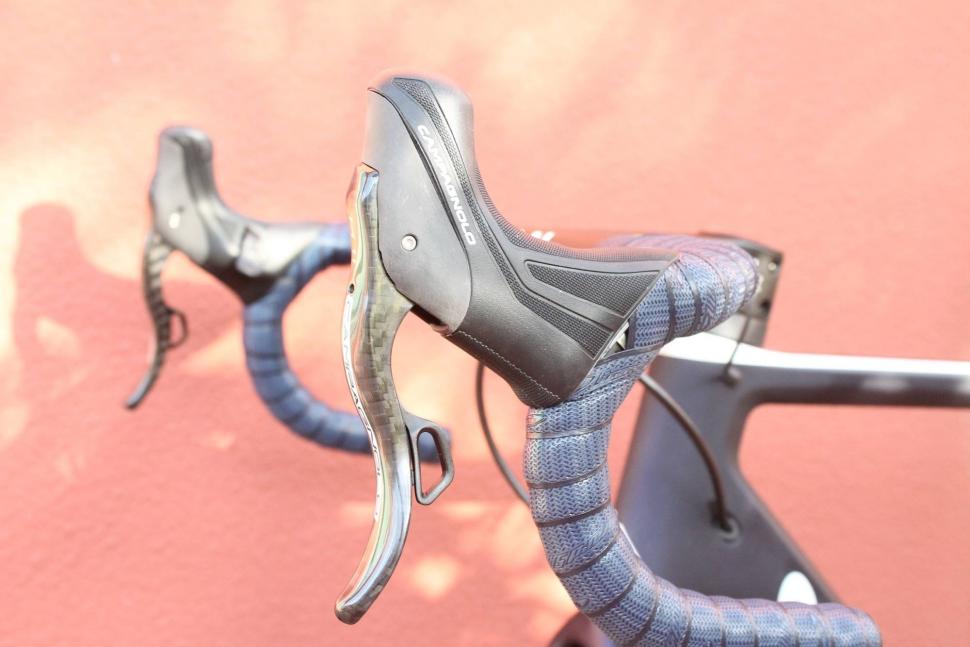
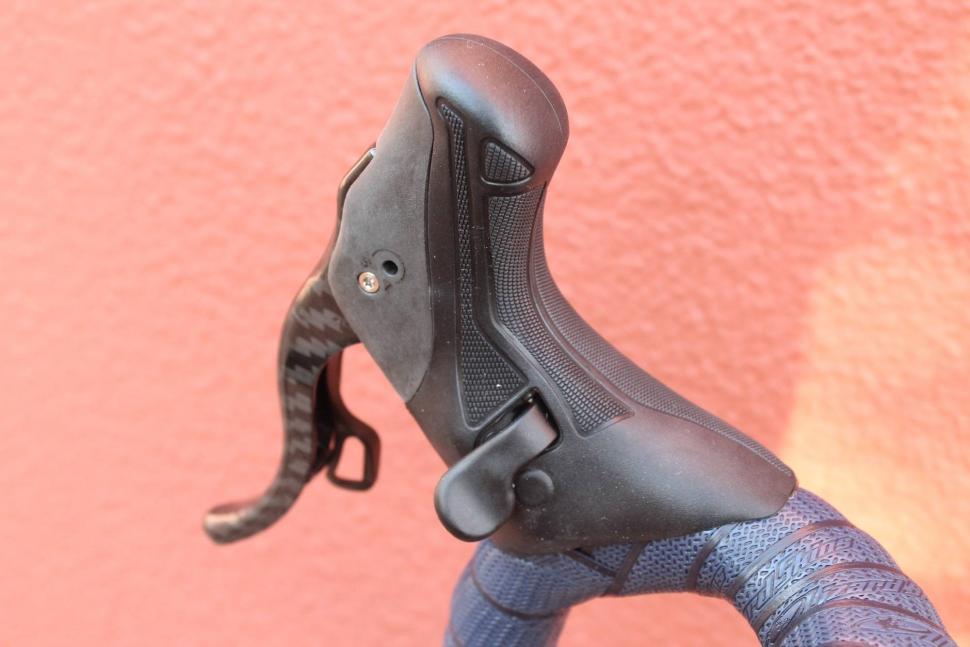
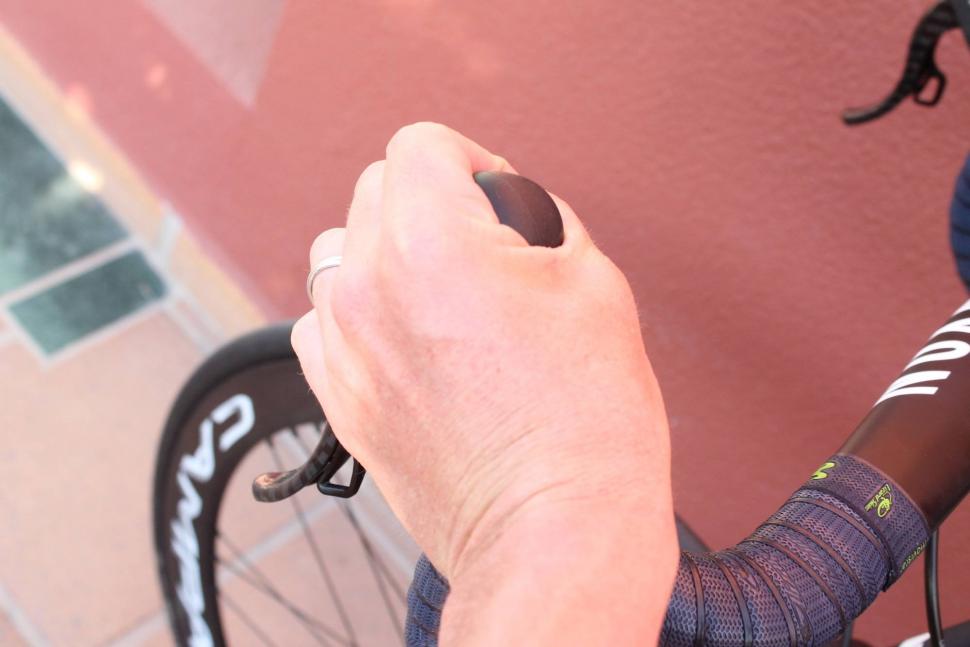
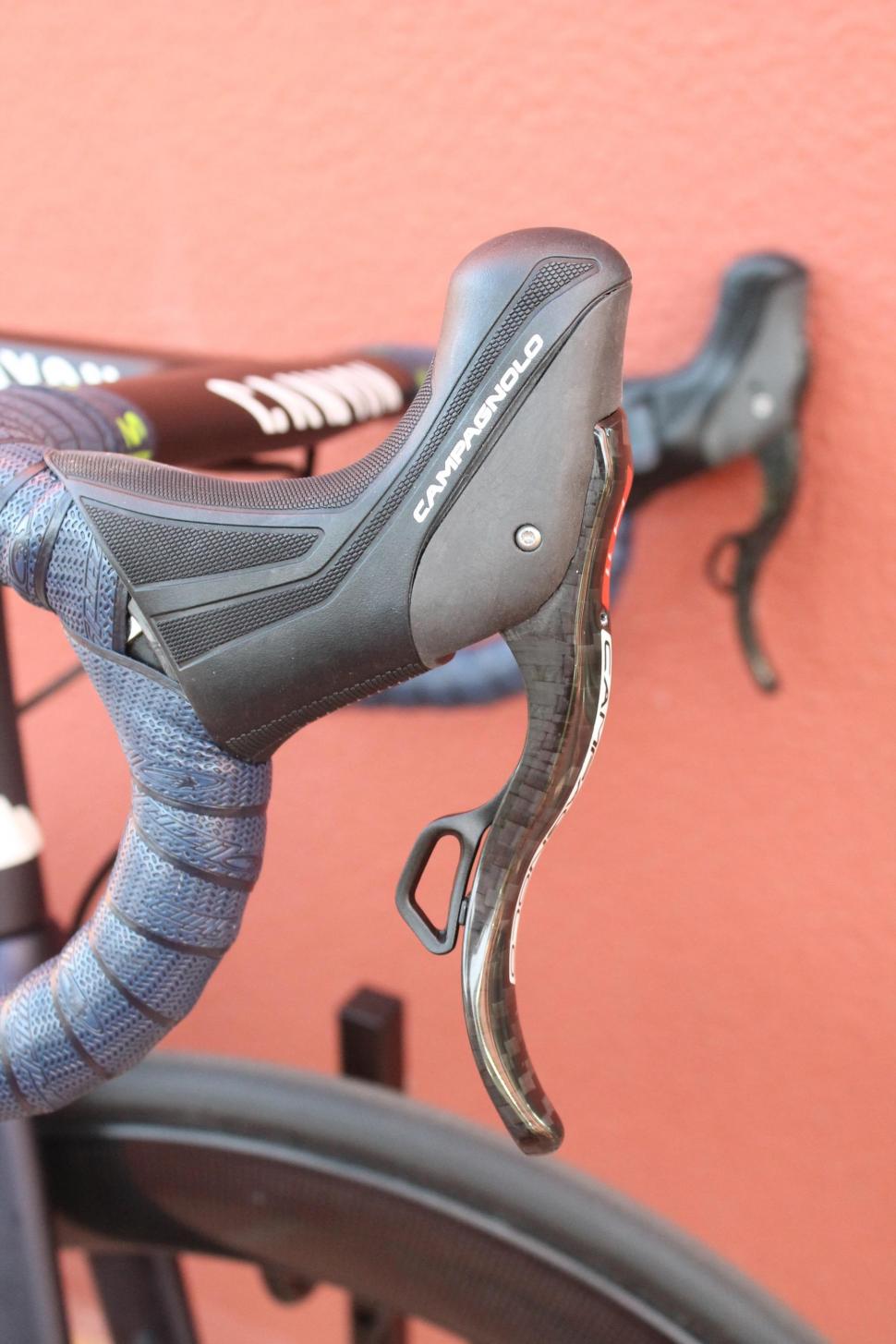
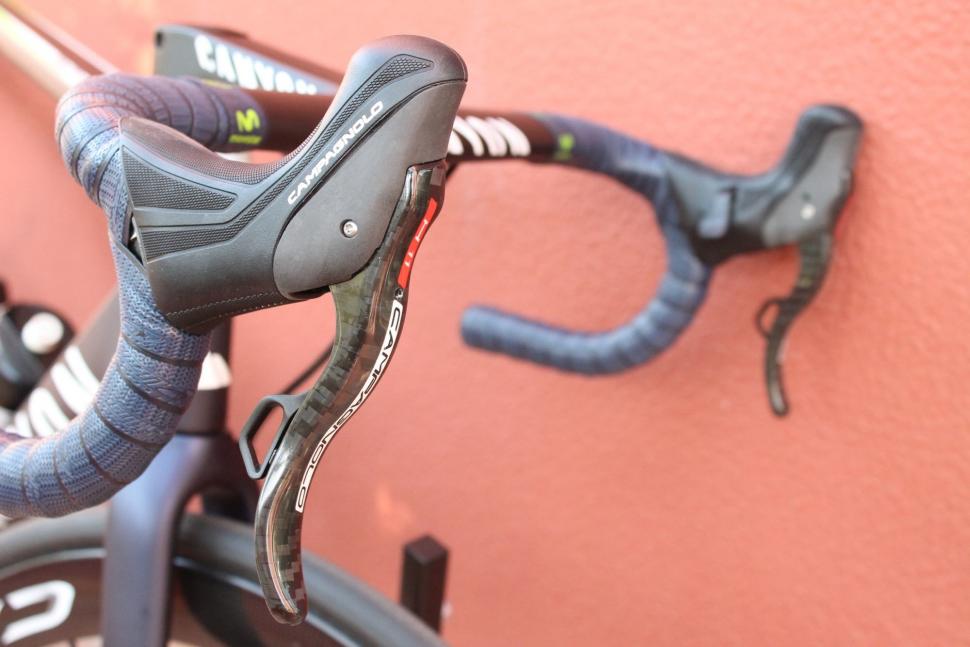
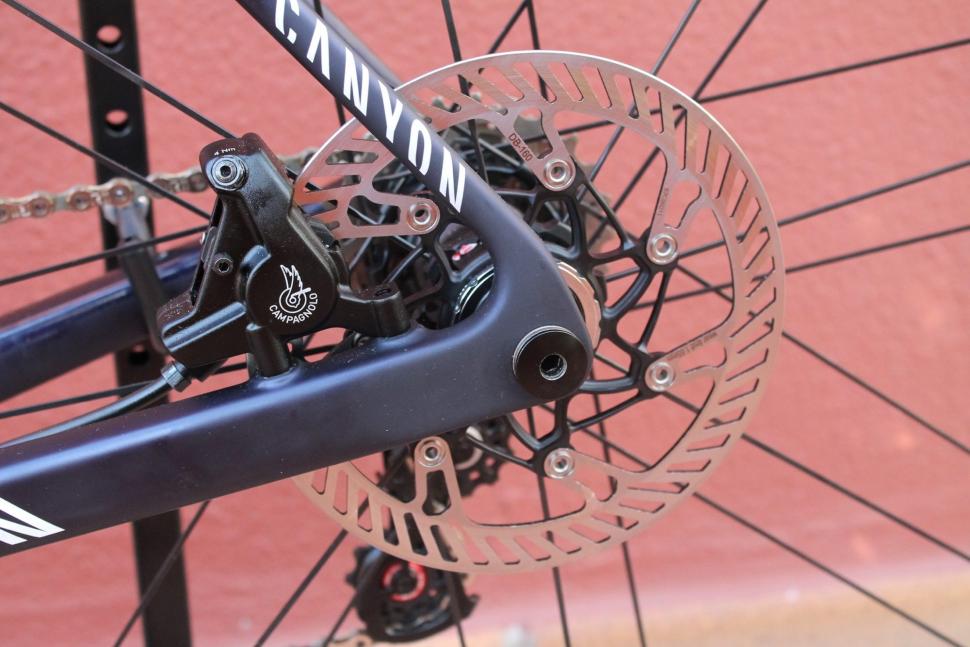
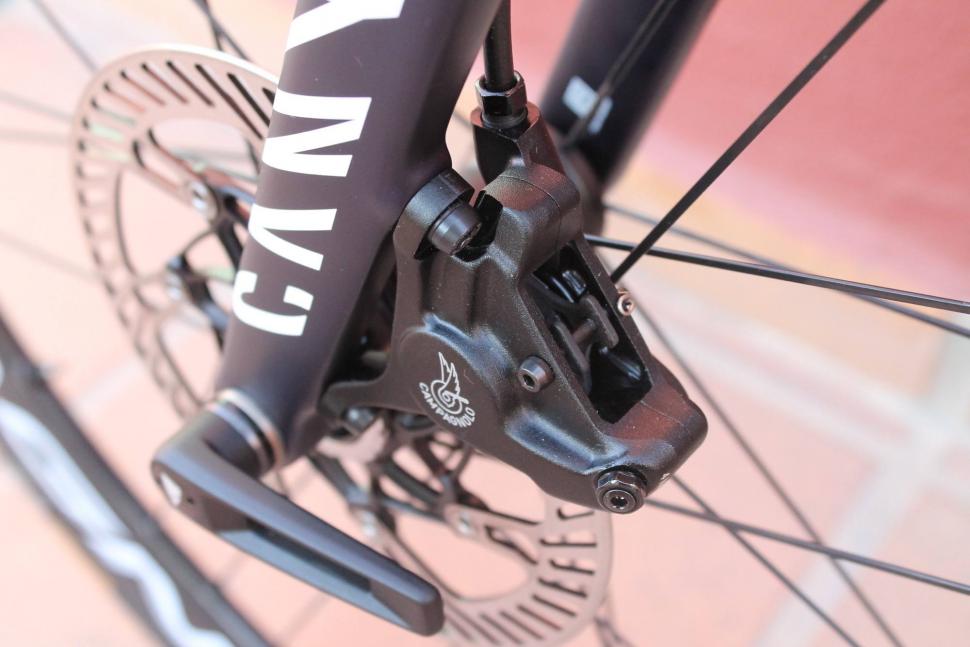

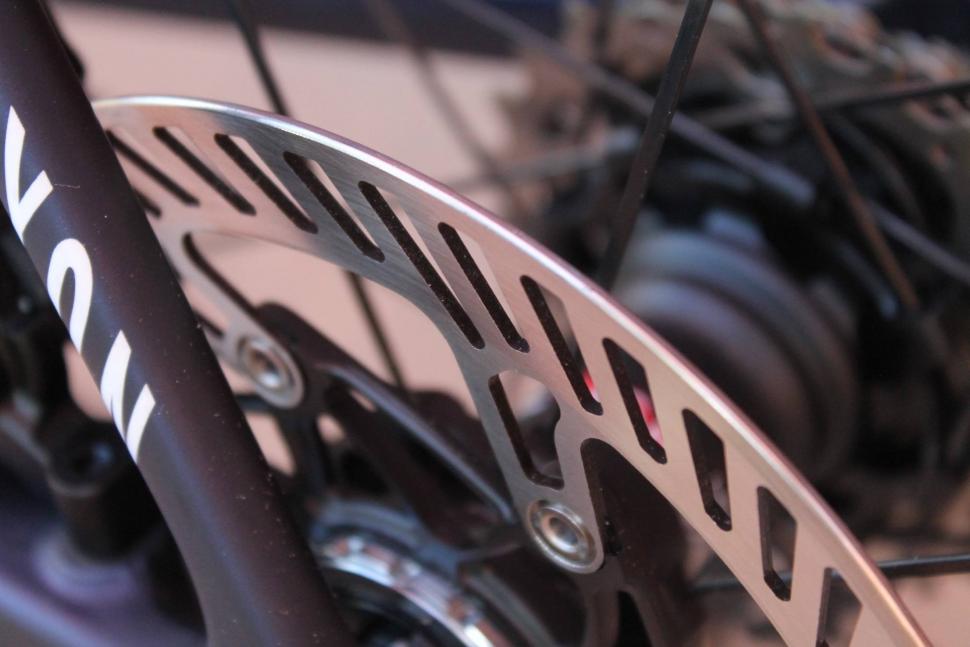
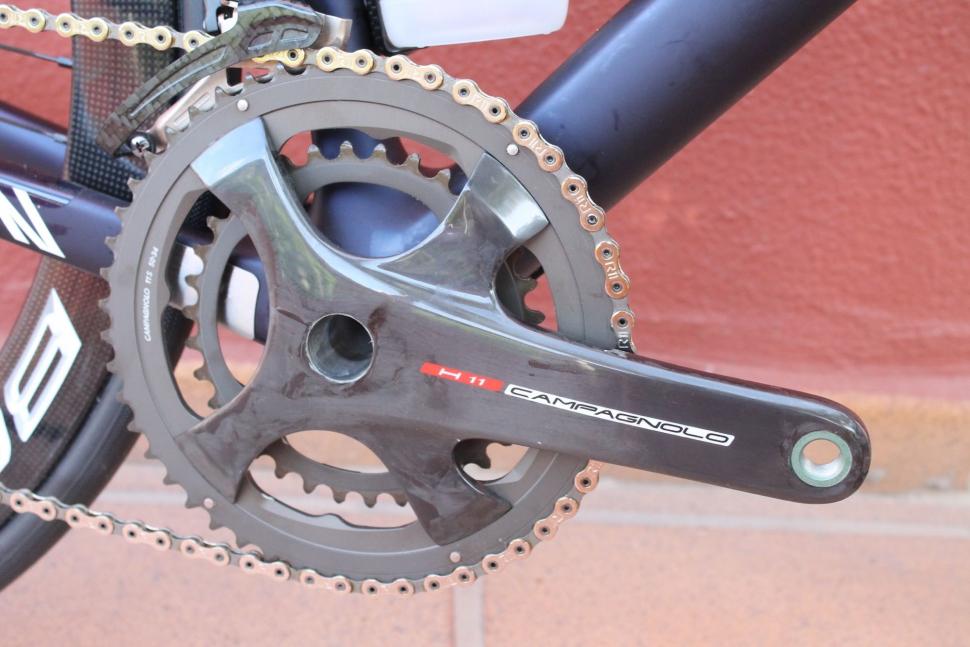
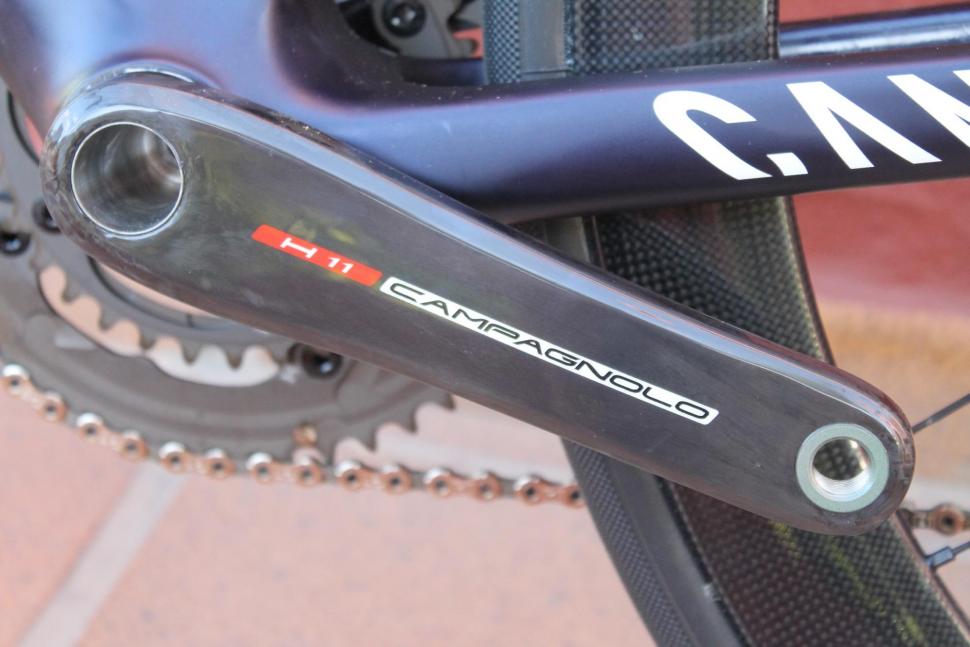
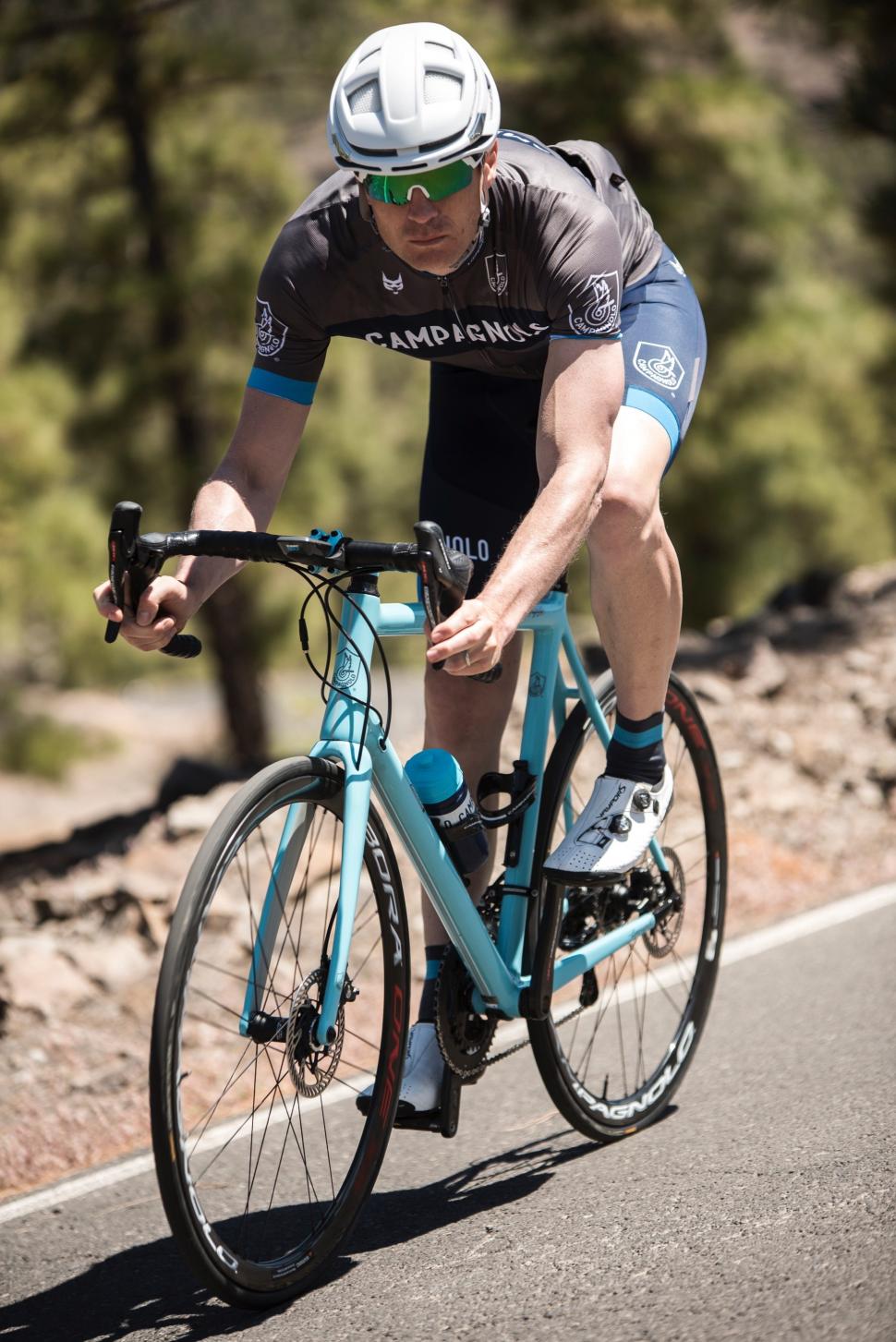

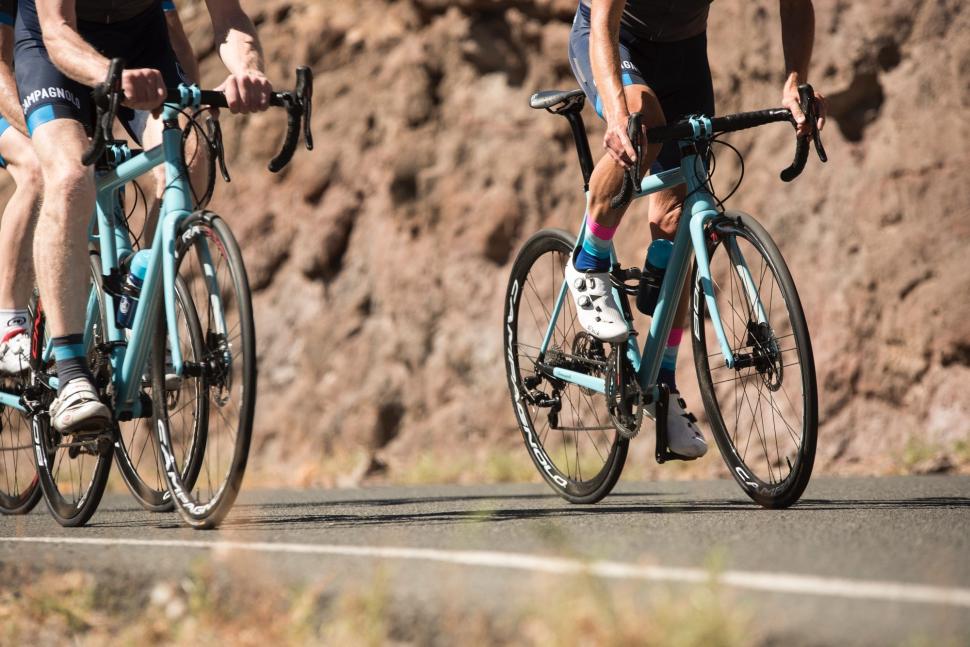
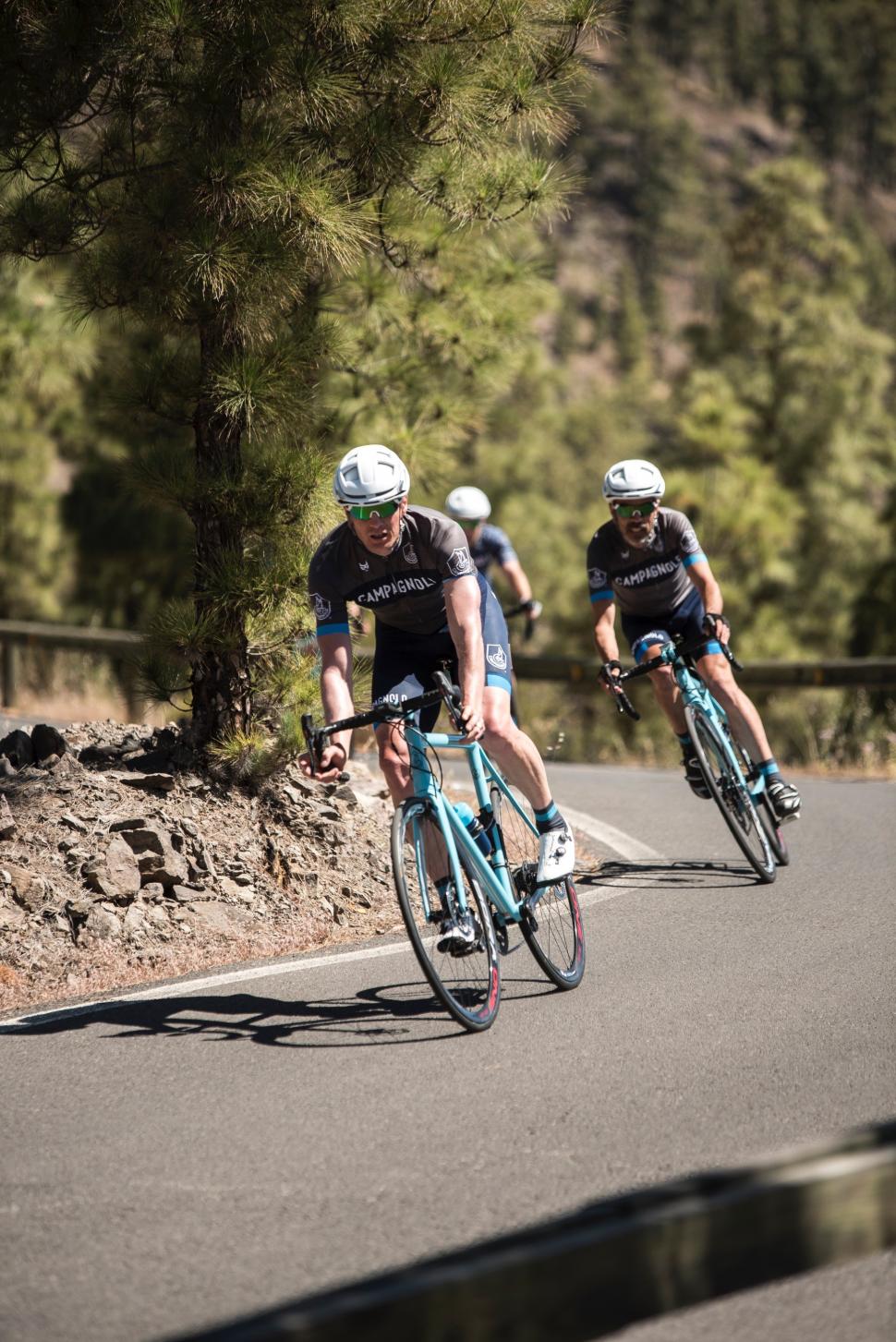

Add new comment
24 comments
Nice to see Campag finally release their disc brake set up
Shame they havent spent more time on the detail of the caliper, it looks a little plain/cheap looking
Being Campag i was expecting them to be much better looking
Though they would have made cnc calipers rather than forged, was expecting them to be more stylish, a bit like Hope calipers
Not making discs available with Chorus EPS seems like a mistake, surely Campag need something to compete with all the Ultegra Di2 disc equipped bikes available.
I was really hoping the rotors would have a design based on the campag logo. ever so slightly disappointed that it doesn't...
At the beginning of this article, it sounded like Campagnolo combined ideas from SRAM ("tall" hood shape for the master cylinders; adjustable modulation setting; rotors remind me of old Avids, but refined) and Shimano (mineral oil as hydraulic medium).
But the geek in me appreciates that Campy took things a few steps further, even designing an entirely new crankset to improve the chainline and accommodate the 135 mm QR/142 mm TA rear hub spacing without resorting to minimum chainstay lengths. Impressive that they thought these things through. I guess part of it is the advantage of being the last player, to learn from the mistakes of competitors.
Heck, some of the ideas they employed are from car brakes - the sonic wear indicator on the pads being one of them.
When a bike company tells journalists they can pay for their own bus tickets to go try out their latest gizmos, at a dry-ski slope just outside Scunthorpe, on a cold and grey Tuesday in February, and the reviews come back ebullient with fulsome praise, then I'll be impressed.
What is the standard for attaching the discs to the wheels, please? Doesn't look like it is 6 bolt and whilst similar to Shimano I am not convinced it is.......
...Does this mean we have to buy a new standard of wheel hubs to fit their disc rotors?
And if so, can we instead use shimano wheel/rotors (or 6 bolt wheel/rotors) with their brakes?
Looks like something similar to Shimano's Center Lock splined interface, but you can bet it won't be interchangeable/compatible with Shimano.
It does look similar to CenterLock.
If Fulcrum is any indication, though, I think Campy will just adopt this system despite it being Shimano's - they don't seem to have any problem with Flat Mount apparently.
EDIT - Yep, Campy simply went with CenterLock. Seems like the lock ring is turned with a bottom bracket tool instead of a cassette lock ring tool though, similar to the way it's done with some mountain bikes.
http://www.bikeradar.com/road/news/article/campagnolo-bora-one-db-shamal...
Christ those rotors are ugly...shifters look better, everything else no different to anything else on the market whatever the half blind campag nutters say. Sure it works well which is all that matters on a group set though
I thought they looked better than any others I've seen. Simple and effective, without all the pointless twiddles and sawtooth shapes that do nothing.
They look the most similar to the old Avid G2 rotors that came with BB7s, except that Campy's are CenterLock fitment.
What's old is new again.
These are definitely the least ugly hydro shifters that I have seen. Actually they look good compared to Sram pointy ones and Shimano bulky ones.
I think the latest Shimano 9120 (mechanical) and 9170 (di2) look the most 'normal'. But these look OK.
Although I love the brand and I think all presented products will be great, I find the prices way too steep for an average cyclist. But then again, it's the same conclusion for other brand's disc products.
I used to be pro-disc oriented, but these days with these prices...too much man!
The pale blue Campag badged frame looks very nice. I wonder what it is. Anyone know?
probably a sarto frame...the campag test rigs usually are...
Magic, thanks.
Good eye. BikeRadar confirms it's a Sarto frame.
http://www.bikeradar.com/road/gear/category/components/disc-brake-system...
'Campagnolo has rocked up to the party late but it has arrived with some prosecco tucked under its arm'
...and that in a nutshell is why I love Campag!
Did you have any use of the Potenza system Mat?? Currently got athena 11speed on my cross bike with cable disc brakes and am desperately wanting to switch!!
can they be adapted to a frame with post mounts?
No. You can't mount flat-mount calipers on a post-mount frame.
Oh bug*er! so i can't have these on my old cross bike as it's post mount??
Any tl;dr available. Total gruppo rim v disc weight?
Weight - I will go faster!!